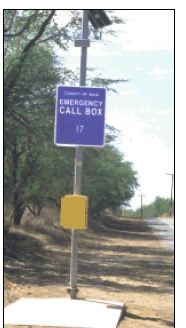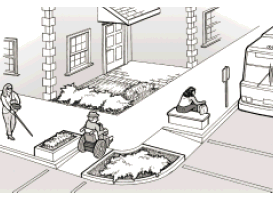6. Processes for Complying with the ADA.
Towns that have not already conducted a self-evaluation or updated a previous self-evaluation conducted under Section 504 of the Rehabilitation Act must do so. The self-evaluation is a review of all town services, programs, and activities to identify any physical barriers or policies, practices, or procedures that may limit or exclude participation by people with disabilities. The self-evaluation includes permanent, temporary, and periodic services, programs, and activities. Each town should look at what services, programs, or activities are offered and in what location.
Any policies, practices, or procedures that may limit or exclude individuals with disabilities must be reasonably modified, unless doing so would result in a fundamental alteration in the nature of the service, program, or activity. The self-evaluation should identify changes to policies to be implemented. It should also identify any discriminatory policies, practices, and procedures that cannot be reasonably changed without resulting in a fundamental alteration.
The self-evaluation also identifies problems with the accessibility of facilities and establishes recommendations for providing program accessibility (which may include relocation to an accessible facility). It may also suggest short-term and long-term strategies to provide access to people with disabilities.

An emergency call box located in a rural area is mounted in an accessible location and can be used with or without speech to provide effective communication.
Towns that completed a self-evaluation to comply with section 504 of the Rehabilitation Act only have to bring the 504 self-evaluation up to date with ADA requirements by evaluating the services, programs, and activities that have changed. However, because considerable time has passed since most section 504 self-evaluations were done, it would be best to conduct a new self-evaluation.
Provide public notice about ADA requirements
A small town must provide notice to the public about its ADA obligations and about accessible facilities and services in the town. The notice must inform the public about the ADA’s nondiscrimination requirements. It may also describe how the public or employees may contact specific town officials about problems with accessibility and the need for effective communication. The information must be accessible to the public, including people who have disabilities that affect communication, such as blindness, low vision, deafness, and hearing loss. Although no specific method is required to reach the public, notice can be provided in more than one format and by using more than one type of media, such as the town’s website, print, radio, or television.
Other obligations for larger towns with 50 or more employees
Although the ADA only requires State and local governments with 50 or more employees to take the following measures, towns with less than fifty employees may want to consider following the same or similar steps because the process may make it easier to comply with the ADA.
a) Designate an individual to coordinate ADA compliance
Responsibilities for the ADA coordinator may include conducting the self-evaluation and developing the transition plan (see below), handling requests for auxiliary aids and services, providing information about accessible programs and services, and serving as a local resource to the town or township. The ADA coordinator may also have responsibility for working with the mayor or town council to ensure that new facilities or alterations to town facilities meet ADA requirements. In some communities, this individual also receives complaints from the public and works to resolve them.
b) Develop a transition plan
If a town with 50 or more employees decides to make physical changes to achieve program access it must develop a written plan that identifies the modifications that will be made. The plan should include timelines for completing these modifications. Interested parties, including people with disabilities and organizations representing people with disabilities, must at a minimum have an opportunity to participate in the development of the plan by submitting comments. A copy of the plan and a copy of the self-evaluation must be available for public inspection for three years after completion.

Installation of curb ramps is one of the items included in the transition plan. This type of curb ramp is used when some type of barrier prevents pedestrians from entering the curb ramp from the side.
c) Develop a grievance procedure
Towns with fifty or more employees must have an ADA grievance procedure. A grievance procedure provides people who feel they have been discriminated against because of their disability, or others who feel they have been discriminated against because they have a friend or family member with a disability, with a formal process to make their complaint known to the town. This procedure encourages prompt and equitable resolution of the problem at the local level without having to force individuals to file a Federal complaint or a lawsuit.

User Comments/Questions
Add Comment/Question